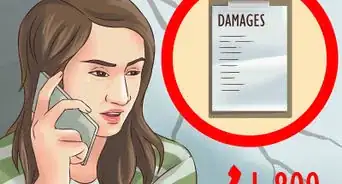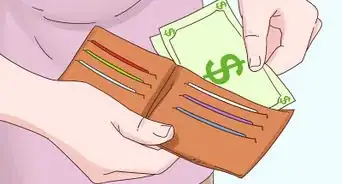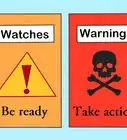This article was co-authored by Frank Boss. Frank Boss is an Electrician and the Owner of AArdvark Electric Service. With over 25 years of experience, he specializes in all forms of lighting installation including recessed lighting, under-cabinet lighting, and security and flood lights. He also has experience in all forms of residential and commercial electrical services including troubleshooting, correcting code violations, service upgrades, and ceiling fan installation.
There are 15 references cited in this article, which can be found at the bottom of the page.
wikiHow marks an article as reader-approved once it receives enough positive feedback. This article has 19 testimonials from our readers, earning it our reader-approved status.
This article has been viewed 426,625 times.
Lightning kills 51 people per year in the United States and injures hundreds more.[1] Take extra precaution during thunderstorms to avoid getting struck. The steps you'll take outdoors, inside, or while driving are important and distinct. While you cannot fully prevent getting struck by lightning, you can decrease the likelihood.
Steps
Staying Safe Outside
-
1Stay away from open fields or hilltops. Lightning often strikes the tallest object in the area, so avoid open fields or any hilltops. Look for a low-lying area like a valley or ravine, preferably obscured from the rain. Take refuge here until the storm passes. Crouch down with your heels touching and your head between your knees: this will make you a smaller target.[2]
- Do not lie down flat, and minimize your contact with the ground. Lightning can be fatal up to one hundred feet away from the initial strike.
-
2Avoid swimming or watersports on rainy days. Check weather forecasts early in the day, and avoid going to a swimming pool, river, lake, or beach on rainy days. If you find yourself in open water during a thunderstorm, return to land immediately. If you are in a boat and cannot return to safety, drop anchor and crouch as low as possible.[3]
- Do not return to the body of water until thirty minutes after the last lightning strike. Any earlier, and the storm may not be over.[4]
- Indoor swimming is equally unsafe. Avoid all large bodies of water during a storm.
Advertisement -
3Don't stand near trees or tall isolated objects. Taller objects are more likely to be struck by lightning. Wherever you are, don't become the highest object anywhere. Avoid standing under trees in a lightning storm, and stay away from tall objects like light posts.
- If you're in a forest, stay near a lower stand of trees.[5]
- Umbrellas can increase your risk of getting hit if it is the tallest object in the area.
-
4Avoid metal objects, like fences or exposed pipes. Metal conducts electricity, and you are much more likely to get hit. If you are carrying large metal objects, let them go. Small metal objects, like piercings or electronic devices, do not carry a large risk and are safe to hold.
- If you are riding a bicycle, drop the bike and crouch to the ground. Most bikes are made of metal and are excellent lightning conductors.[6]
- Rubber shoes or other rubber objects will not actually protect you from metal's conducting properties.
Staying Safe Indoors
-
1Add a lightning rod to your roof. Lightning rods do not attract lightning but do provide a path of least resistance if lightning hits your house. This can prevent the electric current from damaging your home. Do not install a lightning rod yourself: find an electrician certified to install lightning systems.[7]
-
2Avoid bathing, showering, or using the sink as much as possible. During thunderstorms, lightning can travel through water pipes if it strikes your home. Do not bathe or shower until the storm has passed. If you have to use the sink, only do so in emergencies.
- Even showers or bathtubs that are completely enclosed without windows nearby put you at-risk for electrocution because of the water pipes.
- Avoid areas with standing water or excessive moisture during storms, like a cellar basement or patio slab.[8]
- Because porcelain is a great insulator, toilets are safe to use during lightning storms so long as you aren't touching metal.[9]
-
3Turn off and stay away from wired electronics. Using electronic devices that plug into the wall is dangerous during a lightning storm. Avoid using TVs, washing machines, and corded phones during thunderstorms. Wireless electronics, like cell phones, are safe to use unless they are plugged into a charger.[10]
- Unplug electronic objects during a thunderstorm in case lightning strikes the house and the surge short circuits them.[11]
- Electronic devices can get damaged due to lightning strikes and power surges.
- The use of surge arresters can prevent damage by rerouting the voltage to the ground when the voltage spikes.
-
4Keep your windows closed. Avoid standing next to open windows or doors during a thunderstorm. Although rare, lightning can travel through windows during storms. Glass is a good insulator, so it is unlikely that the window will be struck if closed.
- Do not touch doorknobs during a storm, as metal conducts electricity.[12]
Staying Safe in a Car
-
1Run to your vehicle for safety. When your choice is either outdoors or inside a car, your car is always the safest option. If caught in a thunderstorm, remain inside your car until the storm passes. Close your windows, and put the top up in your convertible.
- Open vehicles, like golf carts, ATVs, and riding mowers, are not safe during lightning storms. Seek shelter indoors.
- Convertibles are less safe than other cars in thunderstorms. If possible, avoid driving them when it's raining.
- Starting your car is generally safe during a thunderstorm, but do not under any circumstances jump your car until the storm has passed.
-
2Place your hands in your lap. Most cars are safe from lightning, but the metal exterior or any metal objects are not safe to touch. If lightning strikes your car, the current will flow from the car's outer metal cage and into the ground below. Keep your hands in your lap and avoid leaning on the car doors or touching any exposed metal.
- Rubber tires will not protect your car from getting struck.[13]
-
3Don't handle the radio or your GPS system. Some portions of the current can travel through the wired areas in your car. Don't touch any of the vehicle's electrical systems during the car, including your radio, GPS system, or cell phone charger.
- In some cases, lightning strikes can damage your car's electric systems. Avoid driving your car during thunderstorms if you have expensive radio or GPS systems installed.
-
4Pull to the side of the road in heavy storms. If driving in an outage area, pull over and turn on your hazard lights. Areas with outages are dangerous to drive in, especially if the traffic lights have shorted out. If you must continue traveling, treat intersections with shorted traffic signals as a four-way stop and take extra caution.[14]
Community Q&A
-
QuestionCan riding a fourwheeler have a high risk of getting hit by lightning?
 Community AnswerYes. Fourwheelers are metal objects and do not have the same protection benefits as a car.
Community AnswerYes. Fourwheelers are metal objects and do not have the same protection benefits as a car. -
QuestionCan lightning cause a tornado?
 Community AnswerNo, tornadoes are formed when hot air and cold air mix. Lightning and tornadoes often occur simultaneously, but lightning doesn't cause a tornado.
Community AnswerNo, tornadoes are formed when hot air and cold air mix. Lightning and tornadoes often occur simultaneously, but lightning doesn't cause a tornado. -
QuestionWhat steps can be taken to prevent being struck by lightning?
 Community AnswerDo not go outside. If caught outside, do not stand under a tree or go into open fields. Seek safe shelter.
Community AnswerDo not go outside. If caught outside, do not stand under a tree or go into open fields. Seek safe shelter.
Warnings
- If your hand stands up or you feel tingling during a lightning storm, go indoors immediately. This sign means a lightning strike is imminent.⧼thumbs_response⧽
- Although cell phones are safe to use during thunderstorms, landline phones are unsafe.⧼thumbs_response⧽
- You are within striking distance of lightning if you can hear thunder.⧼thumbs_response⧽
- Most lightning deaths occur during the summer months, when outdoor activity and thunderstorms reaches a seasonal high.⧼thumbs_response⧽
- Do not use the elevator. Use stairs if they do not have a metallic handrail. The likelihood of a power outage is extremely high during a lightning storm.⧼thumbs_response⧽
- Stay away from pools when there is lightning or thunder.⧼thumbs_response⧽
- Lightning can, and often does, strike the same place twice. You are not safe just because lightning recently struck an area.[15]⧼thumbs_response⧽
References
- ↑ https://www.ready.gov/thunderstorms-lightning
- ↑ http://www.wildbackpacker.com/wilderness-survival/articles/surviving-a-lightning-storm/
- ↑ http://watercraft.ohiodnr.gov/lightning
- ↑ http://www.boatingmag.com/surviving-lightning-strikes-while-boating-0
- ↑ http://www.wta.org/go-outside/trail-smarts/how-to/stay-safe-in-a-lightning-storm
- ↑ http://trainright.com/practical-tips-for-cycling-in-lightning-storm/
- ↑ http://www.oldhouseweb.com/how-to-advice/are-lightning-rods-adequate-protection.shtml
- ↑ http://stormhighway.com/safety.php
- ↑ https://www.sandiegoreader.com/news/2004/dec/02/lightning-pee-connection/
- ↑ http://itstillworks.com/dangerous-talk-phone-during-lightning-34361.html
- ↑ https://www.thoughtco.com/things-to-never-do-during-lightning-storm-3444265
- ↑ https://www.trustedchoice.com/insurance-articles/weather-nature/is-lightening-fear-normal/
- ↑ http://www.snopes.com/science/tires.asp
- ↑ http://www.srpnet.com/safety/outage/stormsafety.aspx
- ↑ https://www.discovery.com/tv-shows/mythbusters/videos/lightning-strikes-twice-minimyth
About This Article
To avoid getting hit by lightning, stay away from open fields, hilltops, swimming pools, and open water during storms. Additionally, don’t stand near trees, tall isolated objects, or metal objects that could attract lightning strikes. Instead, seek low-lying areas like valleys or ravines, and crouch down with your heels touching and your head between your knees. If you’re already indoors when the storm hits, avoid bathing, showering, or using the sink since lightning can travel through pipes if it hits your home. To learn how to stay safe in your car during a lightning storm, keep reading!
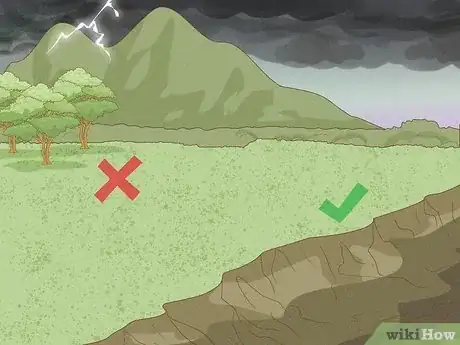
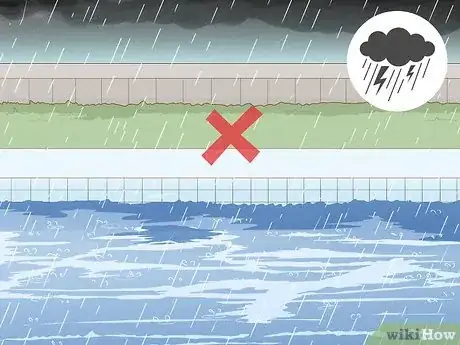
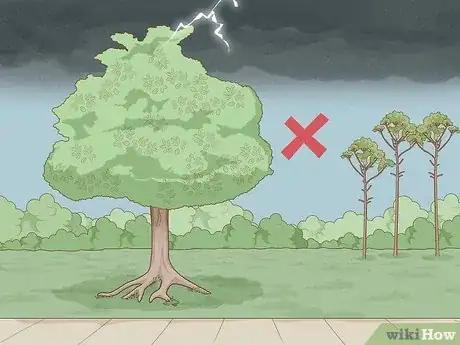
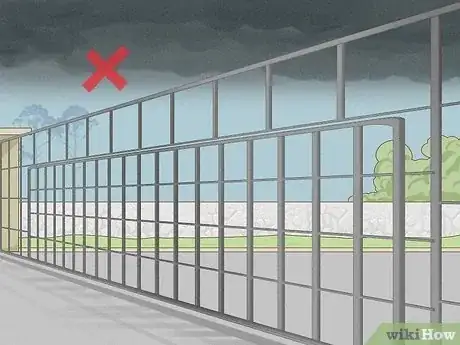
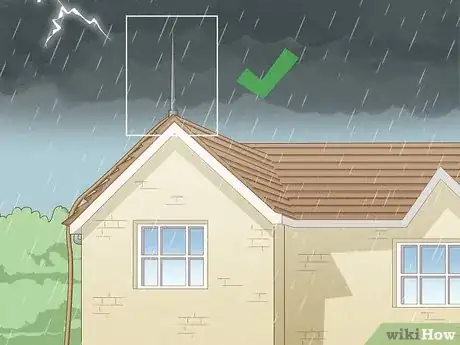
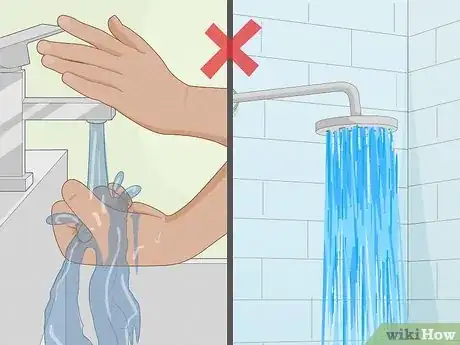
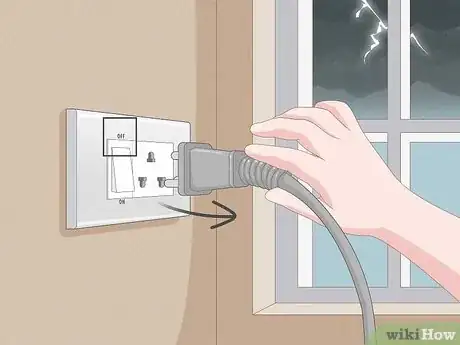
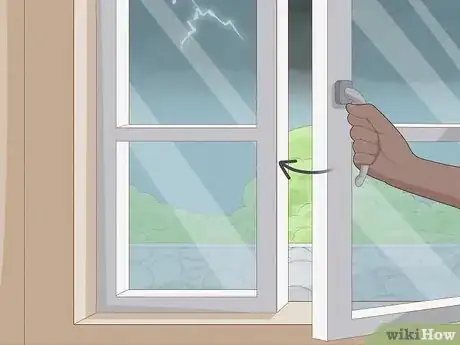
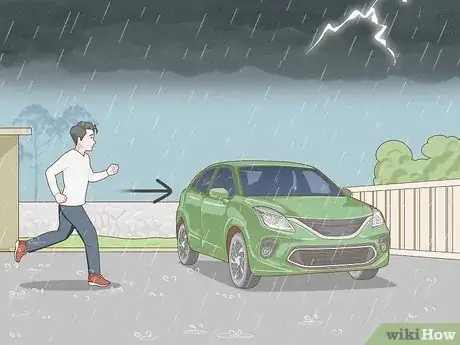


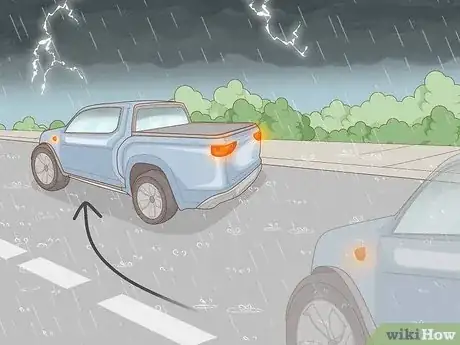
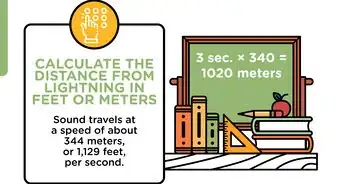



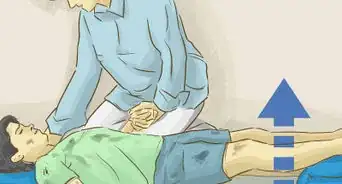

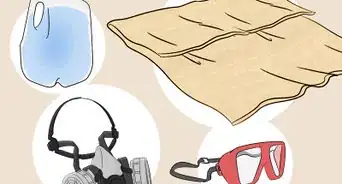

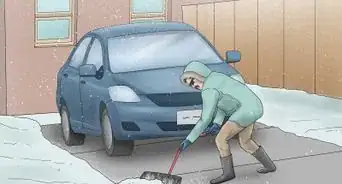
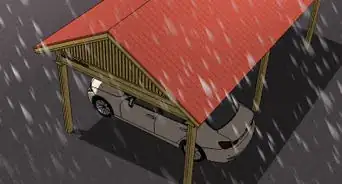
-Step-13.webp)

